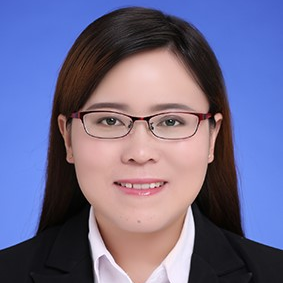Advanced Membranes for Gas Separations and CO2 Capture
A special issue of Membranes (ISSN 2077-0375). This special issue belongs to the section "Membrane Applications".
Deadline for manuscript submissions: closed (31 May 2022) | Viewed by 6289
Special Issue Editors
Interests: MOFs; CO2 capture and seperation; hydrogen storage
Interests: advanced membranes for gas separation such as carbon capture; advanced membranes for water purification; small molecular transport in polymeric materials; structure/property relationship of polymer-based materials
Special Issues, Collections and Topics in MDPI journals
Interests: low dimensional materials; gas separation membrane
Special Issues, Collections and Topics in MDPI journals
Special Issue Information
Dear Colleagues,
We cordially invite you to submit your research work or review articles to this special Issue of “Advanced Membranes for Gas Separations and CO2 Capture”. With a small footprint, high energy efficiency, and simplicity of operation, membrane technology has been recognized as an environmental friendly and effective approach for industrial gas separations and CO2 capture from power plants. Nevertheless, advanced membrane materials are imperative to achieve superior gas separation efficiencies and reduce the capital and energy cost.
Gas separation membranes often suffer a ubiquitous trade-off between gas permeability and selectivity; namely, highly permeable membranes exhibit low selectivity and vice versa. The purpose of this Special Issue is to publish recent advances in membrane materials with both high permeability and high selectivity. The topics of interests include, but are not limited to, novel membrane materials (polymer, metal organic frameworks, carbon materials, zeolites, covalent organic frameworks, and mixed matrix materials) for various gas pair separation (including H2/CO2, CO2/N2, CO2/CH4, O2/N2, and olefin/paraffin), preparation and characterization of thin-film composite membranes or hollow fiber membranes, simulations and modellings of membrane performance and processes, etc.
We are looking forward to receive your outstanding work for this Special Issue.
Prof. Dr. Haiqing Lin
Prof. Dr. Qingping Xin
Dr. Leiqing Hu
Guest Editors
Manuscript Submission Information
Manuscripts should be submitted online at www.mdpi.com by registering and logging in to this website. Once you are registered, click here to go to the submission form. Manuscripts can be submitted until the deadline. All submissions that pass pre-check are peer-reviewed. Accepted papers will be published continuously in the journal (as soon as accepted) and will be listed together on the special issue website. Research articles, review articles as well as short communications are invited. For planned papers, a title and short abstract (about 250 words) can be sent to the Editorial Office for assessment.
Submitted manuscripts should not have been published previously, nor be under consideration for publication elsewhere (except conference proceedings papers). All manuscripts are thoroughly refereed through a single-blind peer-review process. A guide for authors and other relevant information for submission of manuscripts is available on the Instructions for Authors page. Membranes is an international peer-reviewed open access monthly journal published by MDPI.
Please visit the Instructions for Authors page before submitting a manuscript. The Article Processing Charge (APC) for publication in this open access journal is 2200 CHF (Swiss Francs). Submitted papers should be well formatted and use good English. Authors may use MDPI's English editing service prior to publication or during author revisions.
Keywords
- membranes
- gas separation
- CO2 capture
- polymers
- mixed matrix materials
- facilitated transport membranes
- carbon materials
- modellings
Benefits of Publishing in a Special Issue
- Ease of navigation: Grouping papers by topic helps scholars navigate broad scope journals more efficiently.
- Greater discoverability: Special Issues support the reach and impact of scientific research. Articles in Special Issues are more discoverable and cited more frequently.
- Expansion of research network: Special Issues facilitate connections among authors, fostering scientific collaborations.
- External promotion: Articles in Special Issues are often promoted through the journal's social media, increasing their visibility.
- Reprint: MDPI Books provides the opportunity to republish successful Special Issues in book format, both online and in print.
Further information on MDPI's Special Issue policies can be found here.








